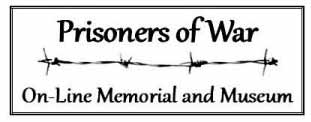Jack Emeny’s wartime story (1938 to 1946)
Capture, Escape and Evasion, Long Marches, Uncategorised, War Diary
Jack Emeny's story by his son Kenneth
My Dad was born at 45, Manderville Street, Darnall, Sheffield, England on the 26th April 1921, to Louise William Samuel Emeny and his wife Kate Eliza (nee Bagshaw), who were married on the 9th of March…
Long March Research Resources
Long Marches, ResearchDiscovering More About The Long March
Books, Accounts by POWs, Videos/DVDs, Websites
Taking the Long Way Home: The Long March of 1945
An interactive map, produced by Dave Lovell and Ian Bowley, of the routes taken by many…
Songs about the Long March by Lesley Loughlin
Long MarchesThe Long March to Freedom: A song by Lesley Loughlin
(from the account of Bernard Loughlin my father-in-law written for my husband Hugh with love)
It is my privilege and it is my pain to share this story here today
It started not so…
Long March to Freedom DVD
Long Marches
In the final winter of the Second World War, the borders of the Third Reich are disintegrating as the Allied Armies close in. Orders come from Berlin High Command. The decision has been taken to clear the Prisoner of War camps in the East…
Peter Henry Blaskey – Capture, POW life, Long March, 2005 visit to Stalag VIIIB
Firsthand Long March Accounts, Long Marches, War Diary From: Bishop Jonathan Blake
Sent: Thursday, April 23, 2015 4:31 PM
My father, Peter Henry Blake, known then as Sergeant Peter Henry Blaskey, rarely spoke about his wartime experiences, an approach common among his peers.
On the night 10/11th…
Leslie Vickers: memories from the end of the war
Firsthand Long March Accounts, Liberation and Repatriation, Long MarchesLeslie Vickers POW, the story of the end of the War from his memories
My Dad, Corporal Leslie Vickers was one of 1400 POW's marched back into Germany from Lamsdorf POW Camp 344 formerly Stalg VIIIB, he was in Dresden on VE day and he tells…
Ed Gamble – WWII Experience
Capture, Firsthand Long March Accounts, Liberation and Repatriation, Long MarchesEd Gamble’s WWII Experience
After the East African campaign we thought and felt that we were invincible – the best trained – the best armed – the best led – and part of the best army the world had ever known – we were GUNG HO…
Dr W T G Atkins – Long March from Cosel Hospital
Firsthand Long March Accounts, Long MarchesInformation provided by Thomas Atkins (son) with assistance from Philip Baker and Michael Tattersall.
I have now found my father’s diary detailing the exact route when he marched from Cosel, probably from the Abyssinian Lager (Russian)…
Ronald Percy Wright – Long March Diary and Transcript
Firsthand Long March Accounts, Long MarchesThe Long March diary was compiled by Ronald Percy Wright.
With thanks to Susan Wright and Louise Wright for supplying the diary and the transcript.
Ronald Percy Wright Long March Diary Transcript
John Stephen Morum – The War Years
Capture, Escape and Evasion, Firsthand Long March Accounts, In Camp, Liberation and Repatriation, Long Marches, Treatment and Welfare, War DiaryJOHN STEPHEN MORUM - HIS-STORY AS NARRATED TO HIS DAUGHTER HELEN. [added comments – by Roy, his son]
We both signed on [John and his brother Ross] when the war broke out, with the First Witwatersrand Rifles. That regiment was later broken…
